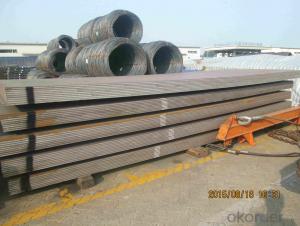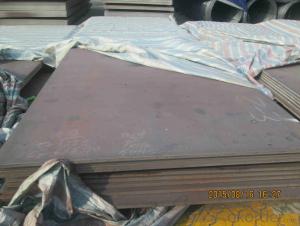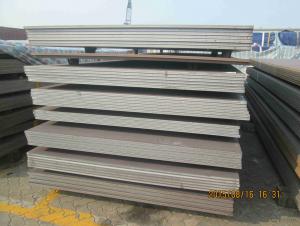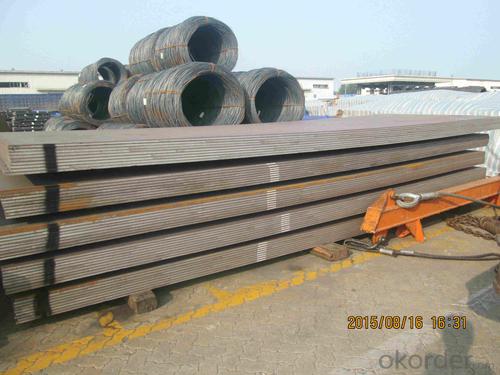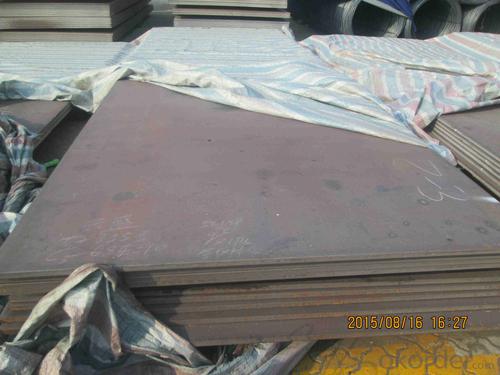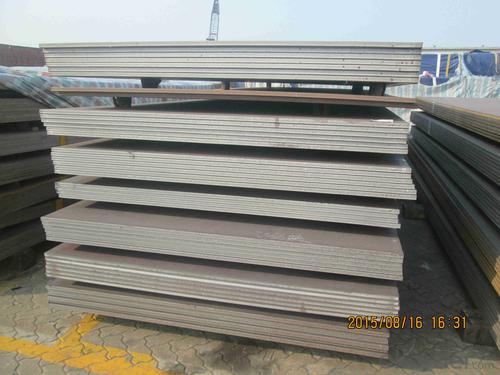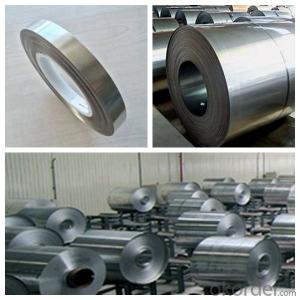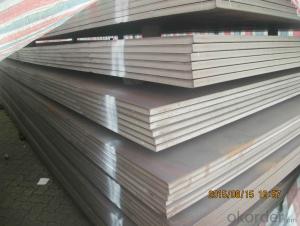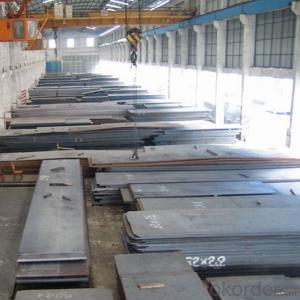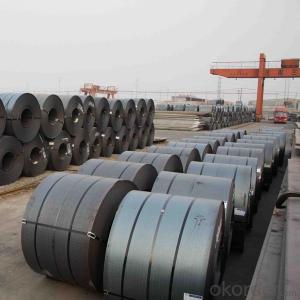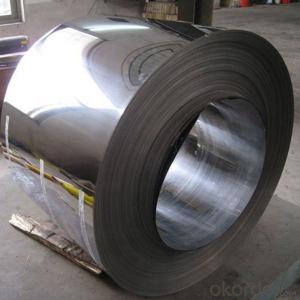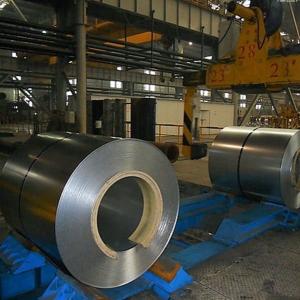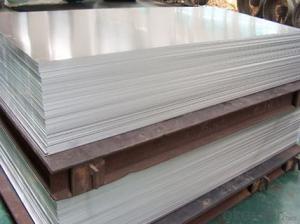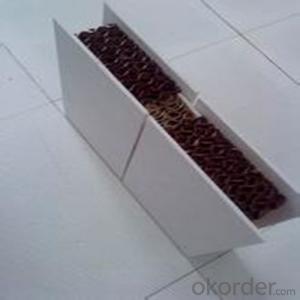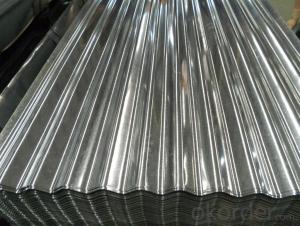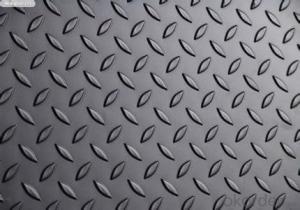Hot Rolled Carbon Steel Plates made in China
- Loading Port:
- China main port
- Payment Terms:
- TT OR LC
- Min Order Qty:
- 500 m.t.
- Supply Capability:
- 20000 m.t./month
OKorder Service Pledge
OKorder Financial Service
You Might Also Like
Product Description:
OKorder is offering Hot Rolled Steel Plates Steel Sheets made in China at great prices with worldwide shipping. Our supplier is a world-class manufacturer of steel, with our products utilized the world over. OKorder annually supplies products to African, South American and Asian markets. We provide quotations within 24 hours of receiving an inquiry and guarantee competitive prices.
Product Applications:
Hot Rolled Steel Plates Steel Sheets made in China are ideal for structural applications and are widely used in construction,machinery manufacturing, container manufacturing, shipbuilding, bridge construction. Can also be used to manufacture a variety of containers, the furnace shell, furnace plate, bridge and vehicle static steel plate, low alloy steel plate,shipbuilding plate, boiler plate, pressure vessel plate, pattern plate, tractor parts, automobile frame steel plate and welding components.
Product Advantages:
OKorder's Hot Rolled Steel Plates Steel Sheets made in China are durable, strong, and wide variety of sizes.
Main Product Features:
· Premium quality
· Prompt delivery & seaworthy packing (30 days after receiving deposit)
· Corrosion resistance
· Can be recycled and reused
· Mill test certification
· Professional Service
· Competitive pricing
Product Specifications:
Thickness | 2-100mm |
Width | 1250mm,1500mm,1800mm,2000mm.,2500mm or as required |
Length | 2000-12000mm |
Standard | AISI, ASTM, BS, DIN, GB, JIS |
Material | A36,SS400,SPCC,SPHC, Q195, Q 235,Q345 |
Tehnique | Hot rolled;cold rolled |
Payment | TT ,L/C |
Packing | Standard seaworthy packing or as required |
Market | Mild east, North/South America, Europe, Asia,Africa etc |
Certificate | BV,SGS,MTC |
Delivery time | Within 7-10 days |
FAQ:
Q1: Why buy Materials & Equipment from OKorder.com?
A1: All products offered byOKorder.com are carefully selected from China's most reliable manufacturing enterprises. Through its ISO certifications, OKorder.com adheres to the highest standards and a commitment to supply chain safety and customer satisfaction.
Q2: How do we guarantee the quality of our products?
A2: We have established an advanced quality management system which conducts strict quality tests at every step, from raw materials to the final product. At the same time, we provide extensive follow-up service assurances as required.
Q3: How soon can we receive the product after purchase?
A3: Within three days of placing an order, we will arrange production. The normal sizes with the normal grade can be produced within one month. The specific shipping date is dependent upon international and government factors, the delivery to international main port about 45-60days.
Images:

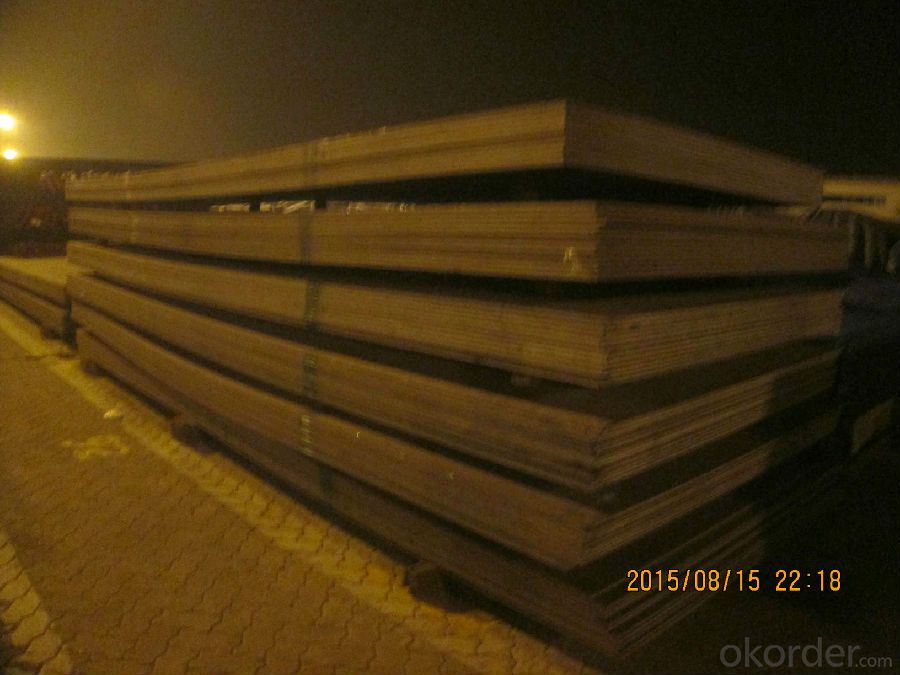
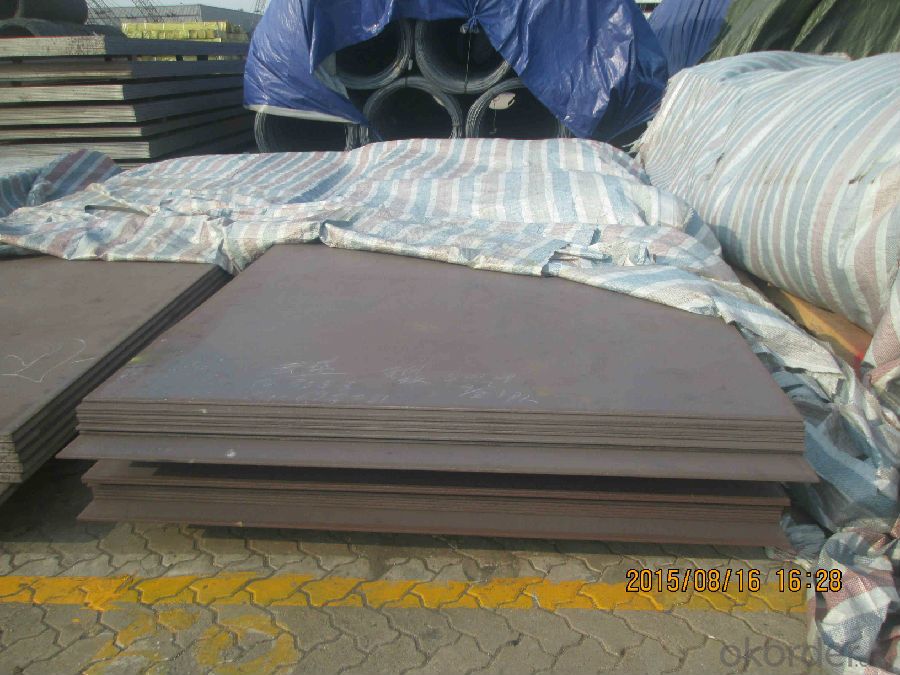
- Q: What are the different grades of steel used for manufacturing sheets?
- Steel sheets used in manufacturing come in various grades, each with its own unique properties and uses. Some commonly utilized grades include: 1. Mild Steel: This grade, also referred to as low carbon steel, is the most commonly employed for sheet manufacturing. It has a low carbon content, making it affordable and easy to work with. Mild steel sheets find application in construction, automotive manufacturing, and general fabrication. 2. High-strength Low-alloy (HSLA) Steel: Offering greater strength and improved corrosion resistance compared to mild steel, HSLA steel sheets are widely used in heavy machinery, transportation equipment, and critical structural applications. 3. Galvanized Steel: These sheets are coated with a layer of zinc, providing exceptional resistance to corrosion. Galvanized steel sheets are frequently employed in outdoor applications like roofing, siding, and automotive parts. 4. Stainless Steel: Renowned for its resistance to corrosion and staining, stainless steel sheets are suitable for a wide range of applications. They are commonly used in food processing equipment, medical devices, and architectural components. 5. Tool Steel: Tool steel sheets are specially crafted to possess high hardness, wear resistance, and toughness. They are utilized in the manufacturing of cutting tools, dies, and molds. These examples represent just a fraction of the diverse grades of steel used in sheet manufacturing. The choice of grade depends on specific requirements such as strength, corrosion resistance, and cost.
- Q: What is the difference between a corrugated and flat steel sheet?
- The main difference between a corrugated and flat steel sheet lies in their structural design. A corrugated steel sheet is characterized by its wavy pattern formed by parallel ridges and grooves. This design provides added strength and rigidity to the sheet, making it suitable for applications that require enhanced load-bearing capabilities. Additionally, the ridges in a corrugated sheet help to increase its resistance to bending and impact, making it a popular choice for roofing and siding applications. On the other hand, a flat steel sheet lacks any ridges or grooves and is characterized by its smooth, flat surface. This design makes it more flexible and easier to fabricate into various shapes and sizes. Flat steel sheets are commonly used in applications that require a smooth and even surface, such as automotive body panels, appliances, and fabrication projects. In terms of visual appearance, corrugated steel sheets have a more distinctive and textured look due to their wavy pattern, while flat steel sheets have a sleek and uniform appearance. Overall, the choice between a corrugated and flat steel sheet depends on the specific application and desired characteristics. If enhanced strength and load-bearing capabilities are required, a corrugated sheet would be preferred. However, if versatility and ease of fabrication are important, a flat steel sheet would be the more suitable option.
- Q: Can steel sheets be used in high-temperature environments?
- Yes, steel sheets can be used in high-temperature environments. Steel has a high melting point and excellent heat resistance, making it suitable for various applications where exposure to high temperatures is involved, such as in furnaces, boilers, and aerospace industries. However, the specific type and grade of steel should be carefully chosen to ensure its suitability for the specific temperature range and conditions of the environment.
- Q: What is the difference between a brushed and polished steel sheet?
- The surface finishes of a brushed steel sheet and a polished steel sheet vary. A brushed steel sheet is distinguished by parallel lines or scratches on its surface, which are created using abrasive materials or tools. The purpose of brushing is to give the steel sheet a textured look, which helps conceal fingerprints, scratches, and signs of wear. Additionally, it provides an industrial and matte finish. On the contrary, a polished steel sheet boasts a sleek and glossy surface. Polishing involves the use of polishing compounds or abrasive materials to eliminate imperfections, scratches, and oxidation from the steel surface. This process results in a reflective and mirror-like finish, which enhances the visual appeal of the steel sheet. Polished steel sheets are often utilized in applications where appearance and visual attractiveness hold significance, such as architectural design, interior decoration, and high-end products. To summarize, the primary distinction between a brushed and polished steel sheet lies in their surface finishes. Brushed steel sheets possess a textured and matte appearance, whereas polished steel sheets exhibit a smooth and glossy, mirror-like finish. The choice between the two is contingent upon the desired aesthetic, functional requirements, and intended application of the steel sheet.
- Q: What are the advantages of using steel sheets in automotive manufacturing?
- Automotive manufacturing can benefit from the utilization of steel sheets for several reasons. Firstly, the high strength and durability of steel sheets make them well-suited for enduring the demanding conditions and stresses encountered by vehicles on the road. This remarkable strength ensures the production of safer and more dependable vehicles, as steel sheets provide a robust protective structure capable of absorbing impact energy in the event of a collision. Secondly, steel sheets possess exceptional formability, allowing them to be easily shaped and molded into various intricate designs required for automotive components. This adaptability permits the creation of precise and elaborate parts, guaranteeing a flawless fit and optimal performance. Moreover, steel sheets exhibit commendable resistance to corrosion, a crucial characteristic for automotive applications. Vehicles encounter a variety of environmental factors such as moisture, salt, and chemicals, which can lead to rust and corrosion. However, by utilizing steel sheets with protective coatings, manufacturers can ensure that their vehicles have an extended lifespan and preserve their aesthetic appeal. Additionally, steel sheets present themselves as a readily available and cost-effective alternative to other materials used in automotive manufacturing. Steel is extensively utilized in numerous industries, which has resulted in the establishment of a well-developed supply chain for steel sheets. This accessibility not only guarantees a consistent supply for automotive manufacturers but also assists in maintaining manageable production costs. Lastly, steel sheets possess excellent thermal conductivity, which is essential for effective heat dissipation in automotive applications. Vehicles generate a substantial amount of heat, particularly in the engine and exhaust systems. Steel sheets aid in efficiently transferring and dissipating this heat, preventing overheating and ensuring optimal performance. In conclusion, the advantages of utilizing steel sheets in automotive manufacturing encompass high strength and durability, exceptional formability, commendable resistance to corrosion, cost-effectiveness, and efficient heat dissipation. These factors make steel sheets the preferred choice for the production of safe, reliable, and long-lasting vehicles.
- Q: Can steel sheets be used for flooring?
- Yes, steel sheets can be used for flooring, especially in industrial or commercial settings. Steel flooring offers durability, strength, and resistance to wear and tear. It is commonly used in warehouses, factories, and other high-traffic areas where heavy loads and frequent foot traffic are expected.
- Q: Are steel sheets suitable for manufacturing kitchen appliances?
- Kitchen appliances can be manufactured using steel sheets, which are well-suited for this purpose. Steel is a durable material with many uses in the manufacturing industry. It possesses high strength, making it capable of withstanding the everyday wear and tear experienced by kitchen appliances. Moreover, steel sheets are resistant to corrosion, a vital quality in a kitchen environment where appliances are frequently exposed to water, moisture, and food spills. In addition, steel is a hygienic material that is easy to clean and maintain, making it an ideal choice for kitchen appliances where cleanliness is of utmost importance. Furthermore, steel sheets can be easily shaped and formed into various designs and sizes, allowing for a wide range of kitchen appliances to be produced. Overall, steel sheets possess the necessary properties and characteristics needed for the production of kitchen appliances.
- Q: Is the steel plate 1.5 meters wide and 2 meters wide at the same price? .
- The steel plate price is generally not the width, they only according to the different material steel plate, gives you to quote the unit price.
- Q: What are the different testing methods for steel sheets?
- There are several testing methods used for steel sheets, including tensile testing, hardness testing, impact testing, bend testing, and thickness measurement. Each method serves a specific purpose in evaluating the quality and properties of steel sheets.
- Q: What is the standard size of a steel sheet?
- The specific application and industry play a significant role in determining the varying standard sizes of steel sheets. However, it is common to find steel sheets in standard sizes like 4 feet by 8 feet (1.2 meters by 2.4 meters) or 5 feet by 10 feet (1.5 meters by 3 meters). These dimensions are widely utilized in construction, manufacturing, and fabrication processes. It is worth mentioning that customized sizes can be obtained to cater to the specific needs of a project or customer.
Send your message to us
Hot Rolled Carbon Steel Plates made in China
- Loading Port:
- China main port
- Payment Terms:
- TT OR LC
- Min Order Qty:
- 500 m.t.
- Supply Capability:
- 20000 m.t./month
OKorder Service Pledge
OKorder Financial Service
Similar products
Hot products
Hot Searches
Related keywords
